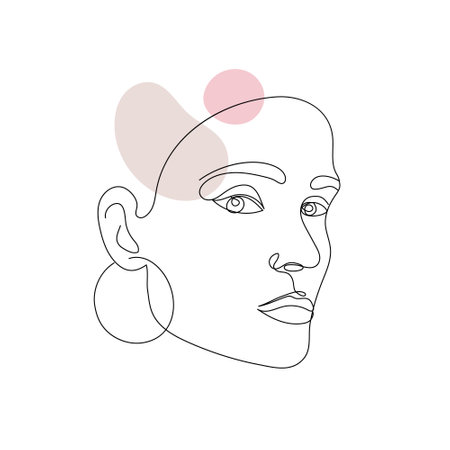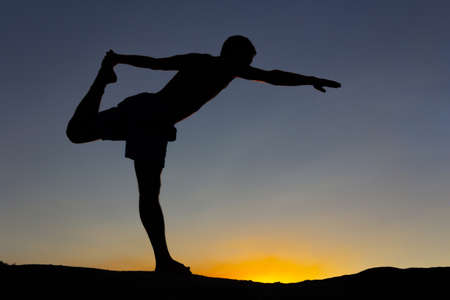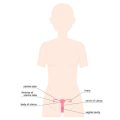Introduction to Mind-Body Practices
In recent years, mind-body practices have become increasingly popular across the United States. Many people are turning to these holistic approaches to help manage anxiety and improve their overall well-being. But what exactly are mind-body practices, and why are so many Americans adding them to their daily routines?
Mind-body practices focus on the connection between our mental and physical health. Instead of just treating symptoms, these methods encourage us to look at the whole person—mind, body, and spirit. Popular examples include yoga, tai chi, meditation, deep breathing exercises, and even mindfulness walks in nature.
Why Are Mind-Body Practices Gaining Popularity?
One reason for the growing interest is the rising stress and anxiety levels that many people experience in modern life. While traditional medical treatments can be helpful, more Americans are looking for natural ways to reduce stress and feel better both mentally and physically. Mind-body practices offer practical tools that can be easily added to everyday life, often without the need for expensive equipment or special facilities.
Common Mind-Body Practices in the U.S.
| Practice | Description | How It Helps With Anxiety |
|---|---|---|
| Yoga | A combination of physical postures, breathing techniques, and meditation | Improves relaxation, reduces tension, and encourages mindfulness |
| Tai Chi | A gentle martial art with slow movements and deep breathing | Promotes calmness, balance, and lowers stress levels |
| Meditation | Sitting quietly while focusing on breath or a mantra | Helps quiet racing thoughts and increases self-awareness |
| Deep Breathing Exercises | Intentional control of breath patterns to relax the body | Lowers heart rate and helps manage anxious feelings on the spot |
| Mindfulness Walks | Paying attention to sensations while walking outdoors | Connects mind and body while reducing worry about the future or past |
The Role of Holistic Approaches in Everyday American Life
Many people in the U.S. now take yoga classes at local gyms, join tai chi groups in community parks, or use meditation apps on their phones. These activities fit into busy lifestyles and can be practiced alone or with others. For those dealing with anxiety or just hoping to feel more balanced, mind-body practices offer a way to care for both mental health and physical wellness—all at once.
2. Yoga: Calming the Mind and Body
How Yoga Helps with Anxiety
Yoga is a mind-body practice that has become increasingly popular in the United States as a way to manage anxiety. It blends physical postures, controlled breathing, and mindfulness techniques to help calm both the body and mind. Many people find that regular yoga practice helps reduce feelings of stress, worry, and tension by encouraging relaxation and present-moment awareness.
Popular Styles of Yoga Practiced in the U.S.
There are many styles of yoga, but two of the most commonly practiced in the U.S. are Vinyasa and Hatha yoga. Each offers unique benefits for anxiety relief.
| Style | Description | Benefits for Anxiety |
|---|---|---|
| Vinyasa | A dynamic style where movements flow smoothly from one pose to another, often linked with breath. | Helps release physical tension, improves focus, and encourages mindful breathing. |
| Hatha | A gentle style that emphasizes holding poses and slow transitions, suitable for beginners. | Promotes relaxation, mindful movement, and is easy to follow for all levels. |
The Role of Mindfulness in Yoga
Mindfulness is at the heart of yoga practice. It involves paying attention to your body, thoughts, and emotions without judgment. By focusing on the present moment during yoga sessions, you can break the cycle of anxious thinking and promote a sense of inner peace.
The Power of Gentle Movement and Controlled Breathing
Yoga uses gentle stretches and slow movements that allow you to release muscle tension and relax your nervous system. Controlled breathing techniques (often called “pranayama”) help slow down your heart rate and signal your body to calm down. These simple practices can be especially helpful when anxiety feels overwhelming.
Common Yoga Breathing Techniques for Anxiety Relief:
- Deep Belly Breathing: Inhale deeply through your nose so your belly expands, then exhale slowly.
- Alternate Nostril Breathing: Breathe in through one nostril while closing the other, then switch sides. This technique can help balance emotions and calm the mind.
- 4-7-8 Breathing: Inhale for 4 counts, hold for 7 counts, exhale for 8 counts. This pattern helps slow breathing and promotes relaxation.
If youre new to yoga or looking for anxiety relief, consider starting with a beginner-friendly Hatha or gentle Vinyasa class at a local studio or online. Many American communities offer accessible classes in gyms, community centers, or even outdoor parks. Regular practice—even just a few minutes each day—can make a noticeable difference in how you feel.

3. Tai Chi: Gentle Movement for Inner Peace
Tai Chi is an ancient Chinese practice that has become increasingly popular in the United States as a way to manage anxiety and promote overall well-being. Unlike high-intensity workouts, Tai Chi uses slow, flowing movements combined with deep breathing and mindful focus. This gentle approach makes it accessible for people of all ages and fitness levels.
How Tai Chi Supports Relaxation and Reduces Anxiety
Tai Chi’s holistic method goes beyond physical exercise. It blends movement, breath, and mental attention in a way that helps quiet the mind. The meditative aspect encourages you to focus on the present moment, which can lower stress levels and calm anxious thoughts. The slow pace allows your body to relax, while rhythmic breathing helps regulate your nervous system.
| Key Benefits of Tai Chi for Anxiety | How It Helps |
|---|---|
| Slow, gentle movements | Release muscle tension and promote relaxation |
| Deep, controlled breathing | Calms the mind and reduces stress hormones |
| Mindful focus | Improves awareness and breaks anxious thought patterns |
| Group participation | Creates social support and a sense of community |
Tai Chi in American Communities
Across the U.S., community centers, senior centers, gyms, and local parks often offer Tai Chi classes tailored for beginners and experienced practitioners alike. These classes provide a welcoming space where people of all backgrounds can experience the calming benefits of Tai Chi together. Many American cities host free or low-cost sessions outdoors, making it easy to try this mind-body practice without needing special equipment or prior experience.
4. Other Holistic Approaches: Meditation, Breathwork, and More
Beyond yoga and tai chi, there are several other mind-body techniques widely practiced in the U.S. to help manage anxiety. These approaches are easy to start at home and can be customized to fit your lifestyle. Here’s a closer look at meditation, breathwork, progressive muscle relaxation, and some beginner-friendly tips.
Meditation
Meditation is one of the most popular ways Americans manage stress and anxiety. It helps quiet the mind, improves focus, and encourages a sense of calm. There are many styles—such as mindfulness meditation, guided imagery, or loving-kindness meditation—but all share the goal of helping you feel present and relaxed.
Simple Steps to Start Meditation
| Step | Description |
|---|---|
| Find a quiet spot | Choose a comfortable place where you won’t be disturbed for a few minutes. |
| Sit comfortably | You can sit on a chair or cushion with your feet flat or legs crossed. |
| Close your eyes | Focus on your breath or use a meditation app for guidance. |
| Breathe naturally | If your mind wanders, gently bring your attention back to your breath. |
| Start small | Begin with 3–5 minutes daily and gradually increase as you feel comfortable. |
Breathwork
Breathwork refers to intentional breathing exercises that can quickly lower anxiety levels. Techniques like diaphragmatic breathing (belly breathing) or box breathing are favorites among Americans for their simplicity and effectiveness.
Quick Breathwork Technique: Box Breathing
- Inhale through your nose for 4 counts.
- Hold your breath for 4 counts.
- Exhale through your mouth for 4 counts.
- Hold again for 4 counts.
- Repeat this cycle 3–5 times whenever you feel anxious or stressed.
Progressive Muscle Relaxation (PMR)
This technique involves tensing and then relaxing each muscle group in the body. PMR is especially helpful if you notice tension in your body when feeling anxious. Many Americans use PMR before bed or during breaks to unwind.
How to Practice Progressive Muscle Relaxation
- Sit or lie down in a comfortable position.
- Tense one muscle group (like your hands) for about 5 seconds.
- Release the tension and notice how the muscles feel as they relax for about 10 seconds.
- Move on to the next muscle group (arms, shoulders, face, etc.) until youve worked through your whole body.
Tips for Beginners
- Start small: Even just a few minutes can make a difference. Don’t worry about doing it “perfectly.”
- Create a routine: Try adding these practices to your morning or evening schedule so they become habits.
- Use resources: There are plenty of apps, YouTube videos, and podcasts that offer guided sessions specifically designed for beginners in the U.S.
- Be patient: It’s normal if it takes time to notice changes—consistency is key!
5. Integrating Mind-Body Practices into Daily American Life
Finding time for mind-body practices like yoga, tai chi, and other holistic approaches can feel challenging in a busy American lifestyle. But with some creativity and the right resources, you can make these stress-reducing techniques part of your daily routine—no matter how packed your schedule might be.
Easy Ways to Get Started
You don’t have to commit hours every day or spend a lot of money to experience the benefits of mind-body practices. Here are some practical options that fit into American routines:
| Option | How It Works | Fits Well If You… |
|---|---|---|
| Local Studio Classes | Join group yoga or tai chi classes at gyms, community centers, or specialized studios in your area. | Like social motivation and a structured schedule. |
| Online Sessions | Follow live or pre-recorded classes from home via platforms like YouTube or subscription services. | Prefer flexibility and saving commute time. |
| Mobile Apps | Use apps designed for short guided sessions (even 5–10 minutes), reminders, and progress tracking. | Need quick solutions that fit between meetings or family obligations. |
| Lunchtime Practice | Sneak in stretches, deep breathing, or simple tai chi moves during lunch breaks at work or school. | Have limited free time during the day but want a mental reset. |
| Family & Friends Sessions | Invite loved ones to join a weekend class or follow a video together at home. | Want to make wellness a shared activity and boost accountability. |
Tips for Fitting Mind-Body Practices Into Your Schedule
- Start Small: Even five minutes of mindful breathing or gentle stretching can help reduce anxiety. Consistency matters more than duration.
- Add to Existing Routines: Try yoga stretches after waking up, meditative breathing before bed, or tai chi movements while waiting for dinner to cook.
- Use Technology: Many American-made apps like Headspace, Calm, Glo, or Yoga for Beginners offer short practices tailored to different experience levels and schedules.
- Create a Dedicated Space: Set aside a corner at home with a mat, comfortable clothing, and maybe calming music—this makes it easier to get started without extra setup each time.
- Look for Community Events: Many local parks offer free outdoor yoga or tai chi sessions on weekends—check social media or community boards for updates near you.
Sample Weekly Mind-Body Plan for Busy Americans
| Day | Practice Type | Time Commitment | When/Where |
|---|---|---|---|
| Monday | Morning Stretch & Breathing Exercise | 10 min | Bedroom before showering |
| Wednesday | Lunchtime Tai Chi (guided by app) | 15 min | Office break room or quiet park nearby |
| Friday | Evening Yoga Online Class | 30 min | Living room with smart TV or laptop |
| Saturday/Sunday | Community Studio Group Session (Yoga/Tai Chi) | 1 hour (optional) | Your local gym, studio, or park event |
Your Next Step: Choose One Approach This Week!
If you’re feeling overwhelmed about where to start, just pick one approach from the table above and try it this week. Remember, there’s no “right” way—what matters most is finding something that fits your lifestyle and helps you feel calmer and more balanced.


